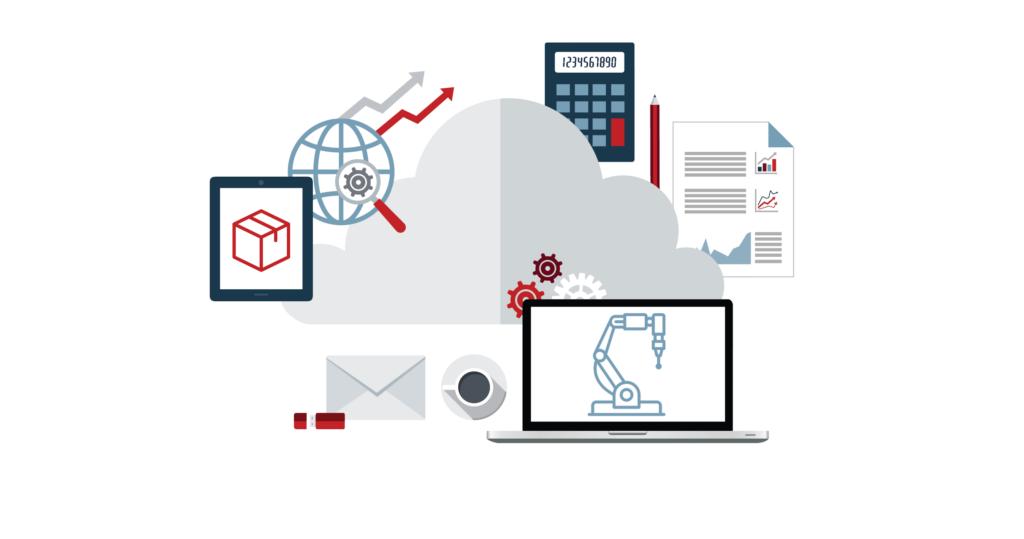

Post last updated: May 2019
The construction industry in the United States is flourishing. But that doesn’t mean businesses can just sit back and watch the money roll in. Digital transformation journey has to be adopted in order to stay competitive. Here are the 3 key U.S. construction industry trends you need to know in 2019 to stay ahead of your competition.
The state of U.S. construction industry trends today
The future is looking bright for construction firms across the globe, with Global Industry Analysts Inc. projecting the global construction market to exceed $1 trillion by 2020. And the U.S. industry is no exception, although last year’s optimism has had to be tempered a bit.
According to EY, the biggest driver of construction industry growth in North America are the positive trends in housing. This is reflected in the current trajectory in spend and employment within the U.S. construction industry.
(Slowly) growing construction spending and employment
Construction Dive’s construction industry data and statistics, updated monthly, show that construction employment rates are rising, but at a slower rate than spending. According to Construction Dive, the labor shortage has proven a major challenge for construction firms; the industry’s struggle to recruit qualified workers is a growing cause for concern. Employment levels are still below levels from 10 years ago.
So it’s not good news across the board.
3 Key U.S. construction industry trends in 2019
With increased spending on the horizon but limited resources, these are interesting times when we’re seeing shifts in U.S. construction industry trends. There’s a lot to be won, but the way forward isn’t always clear.
However, the need for efficiency is obvious. And, luckily, technological advancements provide the answer. Here are some key digital transformation trends for 2019 that can help your company thrive, too.
1. Building Information Modeling (BIM)
If you’ve worked on public projects before, you’re already familiar with Building Information Management or BIM software, which is mandatory for those jobs.
But BIM platforms can add value to all kinds of projects.
BIM software helps improve communications with clients, but also with other parties involved in projects. Increased transparency and a single source of truth: what better foundation for improved collaboration? It doesn’t just sound good in the abstract, either. According to Boston Consultancy Group analysts, BIM should be advanced enough to deliver productivity gains between 15% and 25% as early as 2025. And did you know: if you’re interested in expanding beyond the United States, BIM should definitely be on your radar. Use of Building Information Modeling platforms is used extensively in China, is recommended in the EU, and even mandatory for (some) public sector projects in the UK, Norway and South Korea, with Germany to follow in 2020.
2. Internet of things (IoT)
The launch announcement of the Google Home Mini (via pop-up donut shops) only underlines what we already knew: the Internet of Things isn’t an ephemeral trend. This technology is here to stay, and it’s already changing the way we live and work.
One way that the construction and building industry can benefit from IoT technology is advanced tracking.
For example, wearable smart devices make it easier to track employees. This offers opportunities to improve safety, but also minimize labor waste and even fraud. Another way construction companies can benefit from IoT is equipment and machinery with online capabilities that can monitor and communicate about its own status, streamlining your maintenance and repair processes.
3. E-commerce for building and construction materials
BIM software helps you streamline collaboration and communication. You can optimize operations using IoT technology. And with e-commerce for building and construction materials, you can bring your commercial processes up to speed too.
Both DIY enthusiasts and construction professionals already have plenty of options when it comes to ordering building materials online. The Home Depot’s web store offers over 700,000 items online (as opposed to 35,000 products in a typical brick-and-mortar location), while W.W. Grainger Inc.’s e-commerce sales now account for 47% of total sales.
And if you needed any more proof: Amazon’s tools and home improvement sales have long been outpacing the rest of the market’s.
One Click Retail reports that from 2015 to 2016, Amazon’s U.S. tools and home improvement sales saw 35% year-over-year growth, resulting in a total value of $5 billion. While the total U.S. market was worth $313 billion, it saw just 6% year-over-year growth that year: just a fraction of what Amazon realized. And Amazon’s reign of success has not wavered since.
It’s clear: there’s plenty of demand for an easy way to buy tools and materials online. Our question is: Is your company already capitalizing on this?
How does your company’s digital transformation compare?
A digital transformation project isn’t something you can complete in a matter of weeks. And with such a diverse industry, it’s impossible to make blanket statements about the average progress of digital transformation in construction.
In 2015, The Boston Consultancy Group has taken a closer look at digital transformation maturity in building materials companies and identified three stages.
- Early-stage. This encompasses companies that are taking the first steps in their digital transformation journey. Typical early-stage companies include heavy-side produces of aggregates, cement, ready-mix concrete, and asphalt paving.
- Middle stage. Light-side produces of wallboard, concrete products, pipes, bricks, tiles, insulation, and glass are farther along the path to digital transformation, but the end often isn’t in sight for them yet.
- Advanced stage. According to BCG, distributors are the only construction companies that have mastered the digital transformation process. But even the digital vanguard of the building industry isn’t on the same level as frontrunners from other industries like retail and media.
Throughout these stages, even today, challenges throughout digital transformation in the construction industry remain prevalent.

Construction industry trends research
Get the latest trends and insights into e-commerce in the construction industry.



